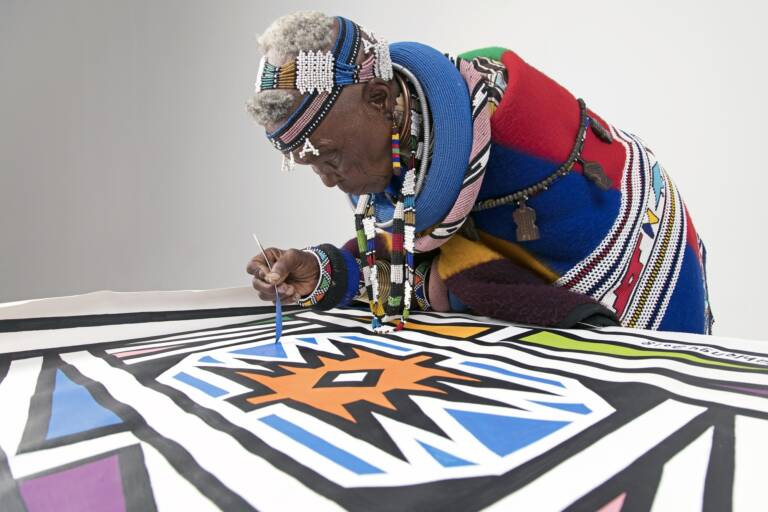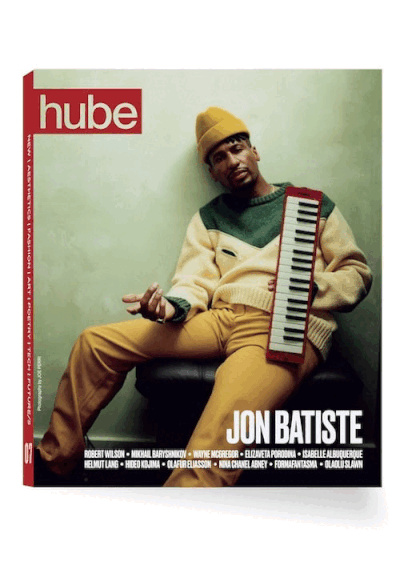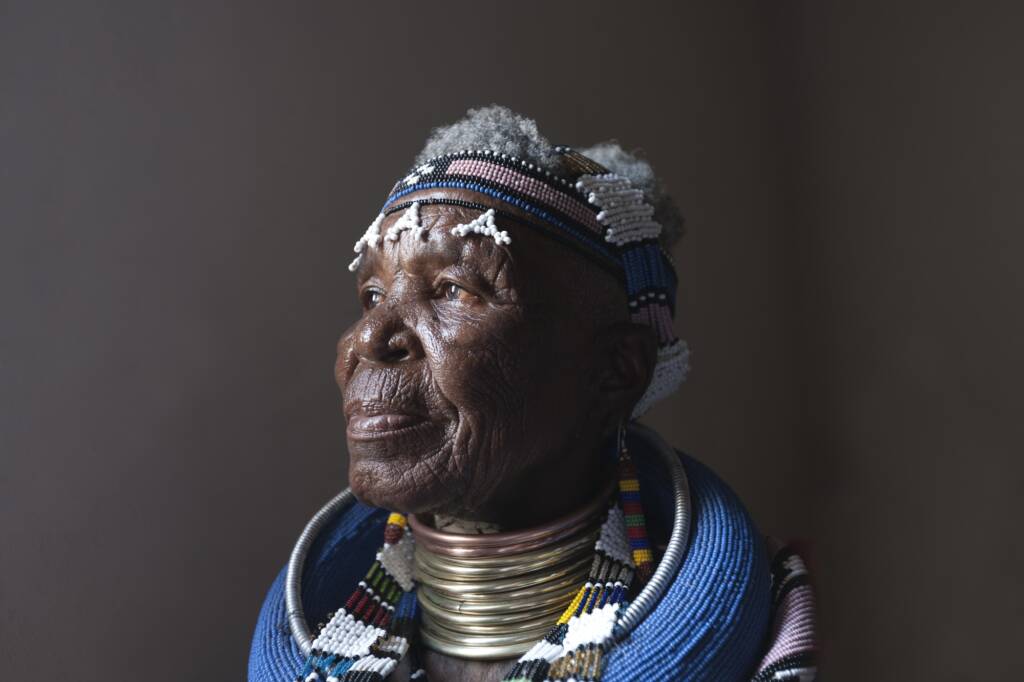
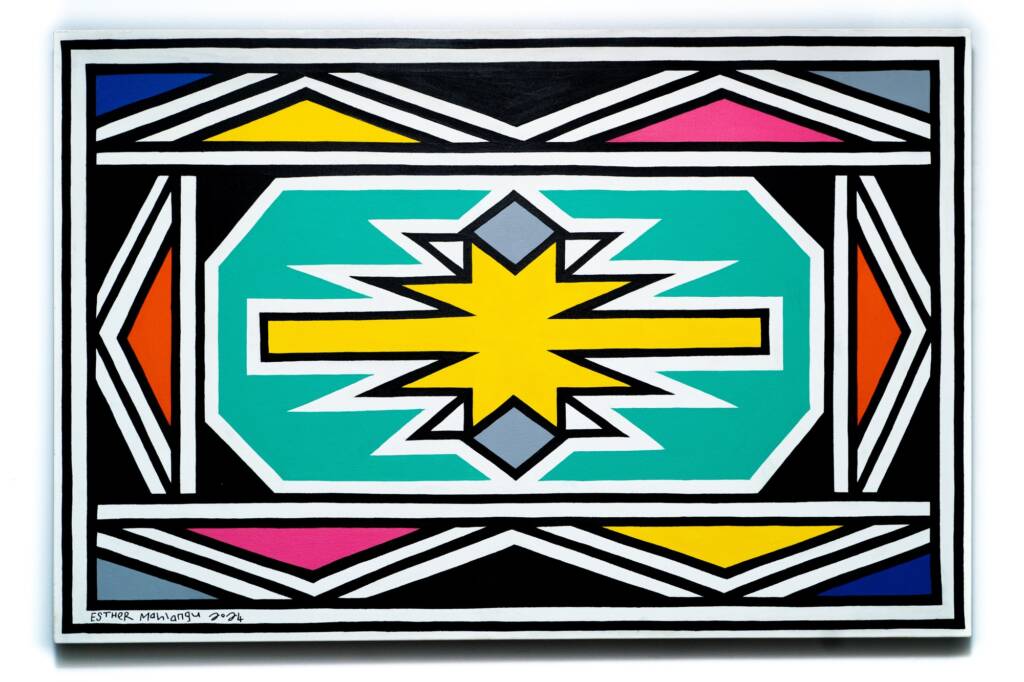
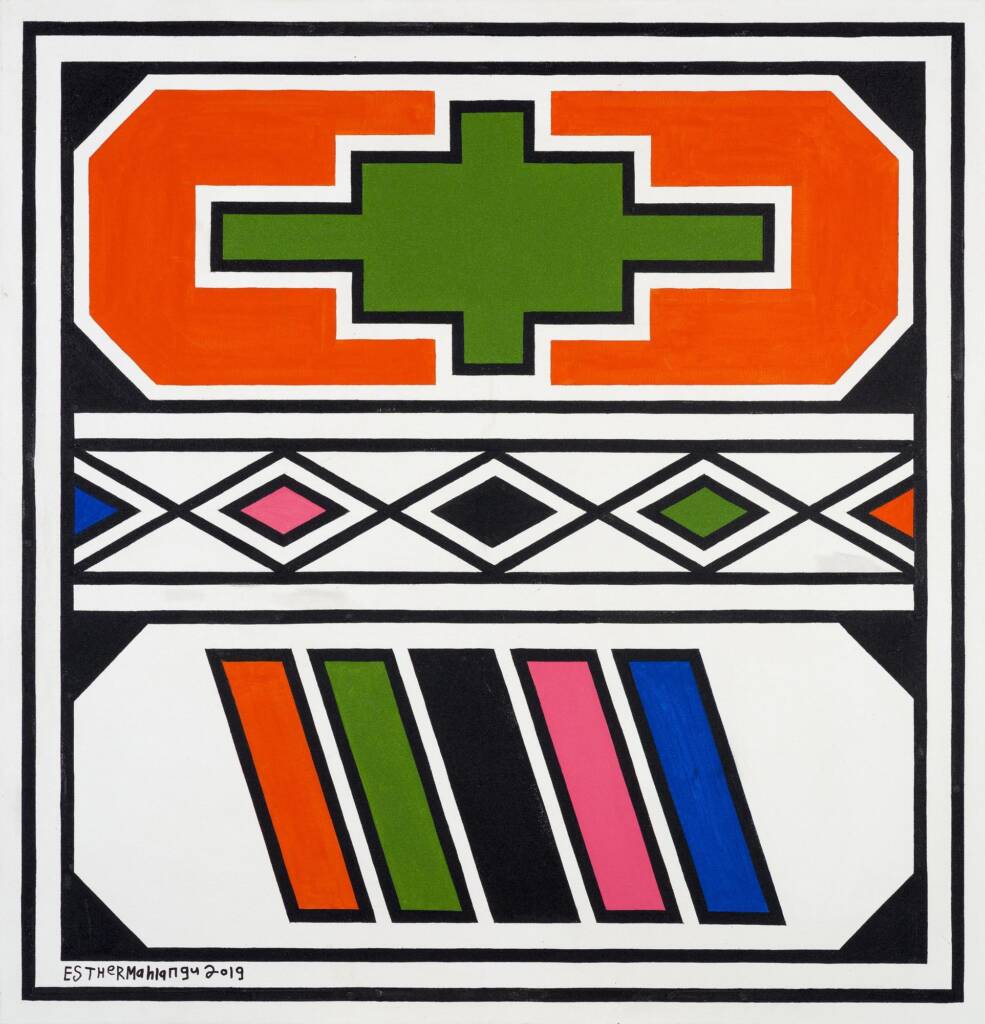
Have you ever wondered how Dr. Esther Mahlangu has ignited the modern art world? Showcased at iconic venues like the Serpentine Gallery, Pompidou, and Zeitz MOCAA, her work redefines the intersection of heritage and contemporary creativity. With groundbreaking projects — from her revolutionary BMW Art Car Collection debut to BMW i5 Flow NOSTOKANA — she challenges Eurocentric narratives and elevates African art on a global platform.
hube: Your art has become synonymous with Ndebele culture, known for its vibrant patterns and deep symbolism, while captivating audiences worldwide at institutions like the Serpentine Gallery. What does it mean to you to carry the legacy of African heritage into spaces like international museums and prestigious institutions? What messages do you aim to share about African heritage, resilience, and creativity through your work?
Esther Mahlangu: I learnt the art of Ndebele design from my mother and grandmother as a young child as is tradition amongst the Ndebele nation. I am very proud of my Ndebele heritage and am passionate about doing what I can to ensure that Ndebele art and culture live on for future generations. Ndebele art was traditionally used to decorate buildings. I realised the potential for re-imagining Ndebele design onto more contemporary platforms to expose my artworks to much larger global audiences.
This led me to paint many items including canvas, cars, motorbikes, bicycles, skateboard decks and even mannequins, AI and BMW’s latest colour change technology over my career that spans 7 decades. I have collaborated extensively with global brands, artists, pop icons and others and this all combines to make me a contemporary artist who has influenced popular culture whilst still someone who respects the traditions and roots from which I come.
h: Africa has a rich artistic heritage, yet many African artists are underrepresented in global museum collections. Your work has garnered significant recognition from various institutions, which are traditionally rooted in Eurocentric art traditions. What do you think has contributed to the strong resonance of your work in these spaces, and how might this create opportunities for other African artists?
EM: African artists have traditionally been underrepresented globally. This includes art fairs, museums, art fairs, galleries, writers, biennales and the like. There are lots of elements that have contributed to this. Apartheid played a role in preventing Black artists in South Africa from accessing global platforms. African artists have often lacked the capital to travel internationally in search of representation. Gallerists and other parties who lead the sector internationally have not traditionally been exposed to African artists. I was fortunate that I was invited to participate in Les Magiciens de la Terre at the Pompidou in Paris in 1989. This was during Apartheid when very few Black artists were flying internationally to showcase their works. My artwork received much positive exposure and in 1991 I was invited to become the first woman and first African to participate in the BMW Art Car Collection.
These two projects generated much positive exposure for me which led to many projects thereafter. But it is important to note that I was open to travelling to France in 1989 when very few of my family or community had ever flown in a plane. I have travelled extensively since then and remained open to high-profile collaborations with popular global brands, pop icons, celebrities, and the like. This has led to my artworks being exposed to large audiences and has secured my global standing.
h: Figures like Usher, Trevor Noah, and Swizz Beatz often share your work in their spaces. How do you feel about being embraced by icons in popular culture, and what role does this visibility play in elevating African art globally?
EM: I am appreciative of any positive support that I receive. These personalities have large followings and have the power to be able to introduce them to other artists that they respect. It was a pleasure to collaborate with John Legend on the Belvedere campaign as this generated much exposure for me and my artworks and raised substantial funds for the fight against HIV in Africa.
h: Bettina Korek has described you as ‘one of the most important artists of our time’. How do you interpret this recognition, and what responsibilities come with being seen as a cultural ambassador for African art?
EM: I appreciate the recognition for my contribution to contemporary art over 7 decades. I will keep working for as long as I can to continue to create and expose my artwork to as many people as possible. I don’t see my being seen as a cultural ambassador for African art as coming with responsibilities. I am deeply grounded in my Ndebele culture and will continue to be so and to do what I can to ensure that Ndebele art and culture lives on for future generations.
h: The retrospective at Zeitz MOCAA in Cape Town pays tribute to your remarkable career and influence on contemporary art. What does it mean to you to have your life’s work showcased in such a significant space for African art, and how do you hope this exhibition inspires younger generations of African artists?
EM: Then I Knew I Was Good at Painting: Esther Mahlangu, A Retrospective ran at the Iziko South African National Gallery and is now running at the Wits Art Museum. It is wonderful to see an exhibition in a museum space that presents and acknowledges my achievements over so many decades. It was also a pleasure to see so many old artworks and the BMW Art Car after so many years and to meet so many people who are interested in my practice. I hope that many African artists benefit from my successes and that these inspire them to work hard and strive to excel globally.
h: Your collaboration on the BMW i5 Flow NOSTOKANA introduced Ndebele art into groundbreaking e-ink technology. How did this project allow you to express your artistic vision in a new way, and what does it mean for traditional art to engage with modern technology?
EM: Throughout my career, I have been open to exploring new mediums and technologies. This started when I reimagined traditional Ndebele design which was typically used to decorate buildings to more contemporary platforms. It was interesting seeing my artwork presented using BMW’s latest colour change technology. The Nostokana car is currently touring the world’s art fairs and has been extremely well received.
h: The Beyond the Wall exhibition in Rome explores the fusion of traditional Ndebele art with modern contexts. How does this project reflect your vision of bringing Ndebele culture to global audiences, and what message do you hope viewers take away from this exhibition about the power of African artistic traditions?
EM: I have participated in numerous international exhibitions, art fairs and collaborations. These are important in that they help to expose my artworks and practice to large international audiences. I hope that these audiences feel a sense of calm and peace when they view my artworks which is what I intend creating through the mirroring of colour and shapes to create balance in each work.
h: Your career has spanned decades of cultural shifts and artistic trends. What challenges have you faced in bringing Ndebele art to a global stage, and what milestones have brought you the most pride?
EM: I have never focused on the challenges. I have always created works and been open to collaborating with parties and entities who have the platforms available to present them to their audiences. There are many moments of pride in my life and career. My participation in Les Magiciens de la Terre at the Pompidou in Paris in 1989 and the BMW Art Car project in 1991 attracted extensive positive exposure and laid the foundation for many projects thereafter. Presenting a mural at the Serpentine and another currently at the Louvres Abu Dhabi, visiting my Retrospective at the Iziko SA Museum and Wits Art Museum, the numerous awards that I have received over the years including being recognised as an Officer of Arts and Letters by France all are moments of great pride for me.
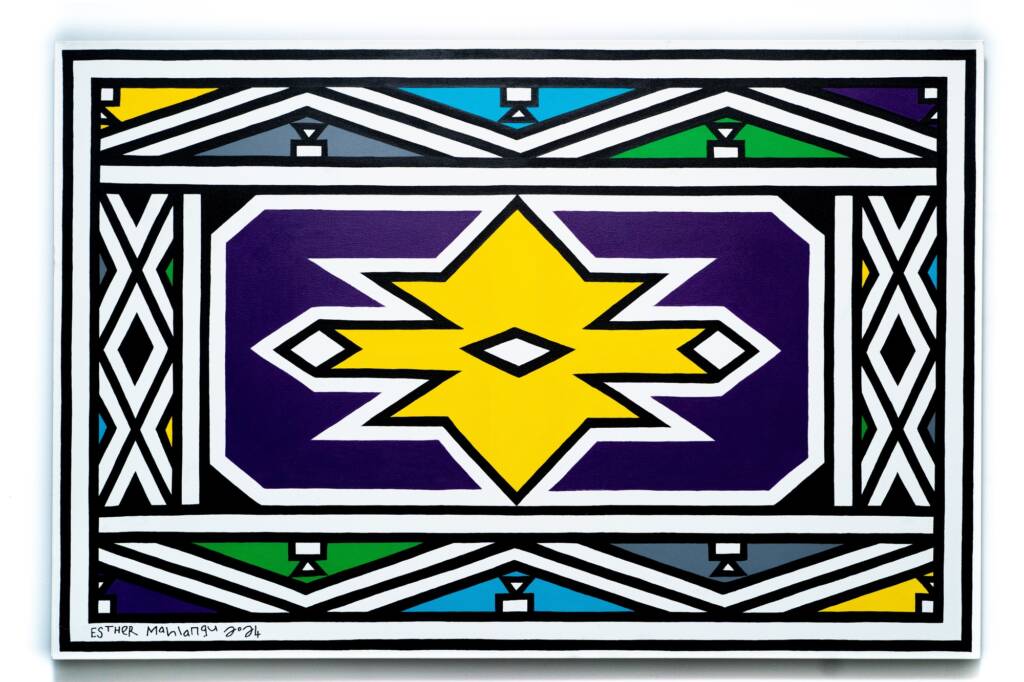
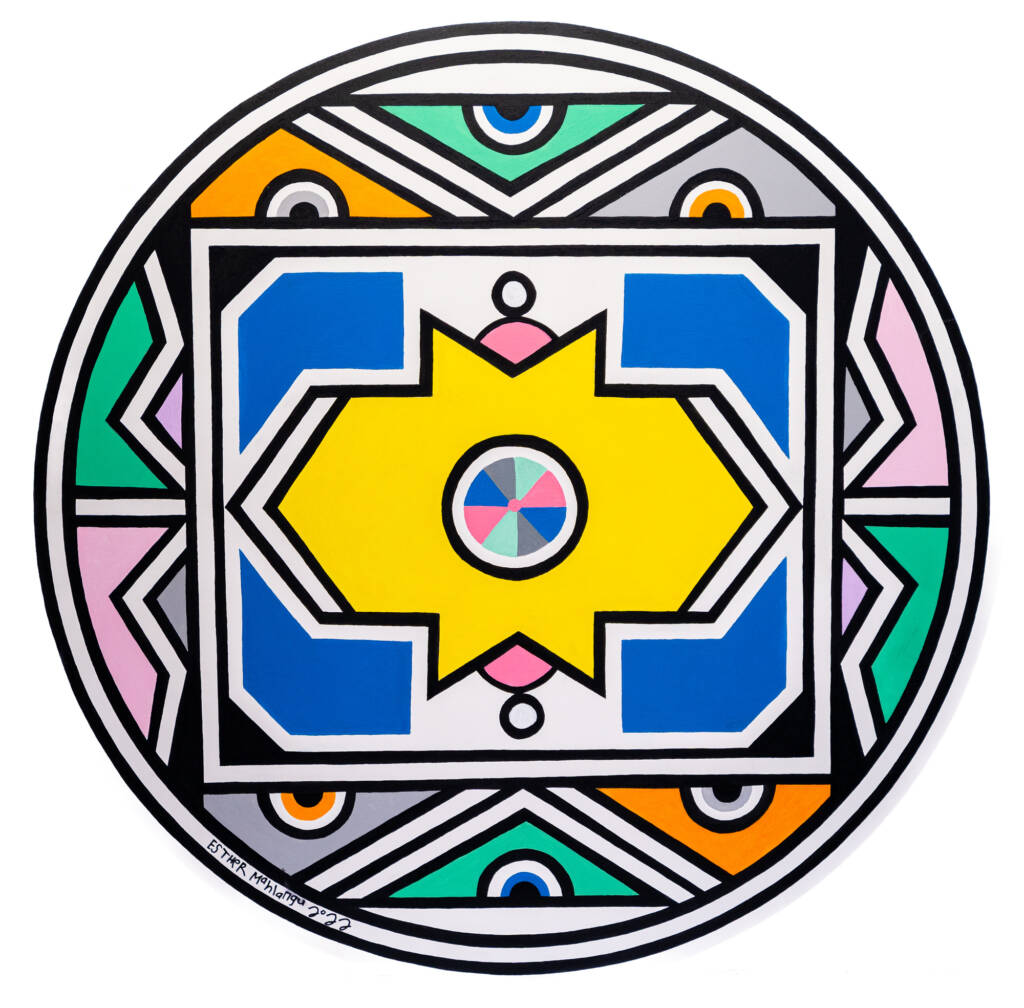
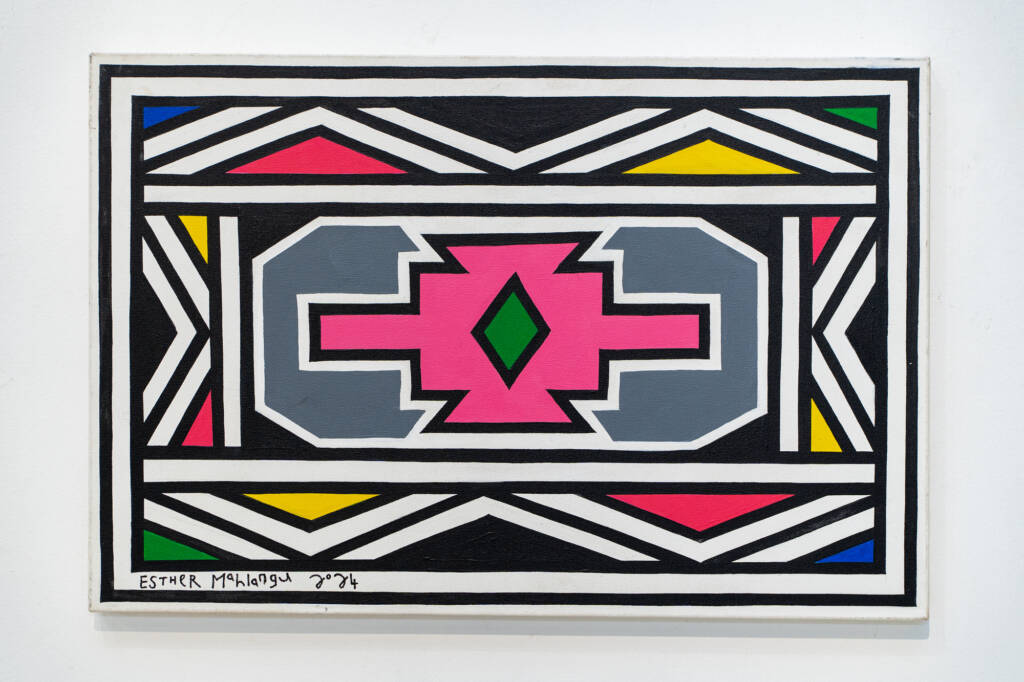
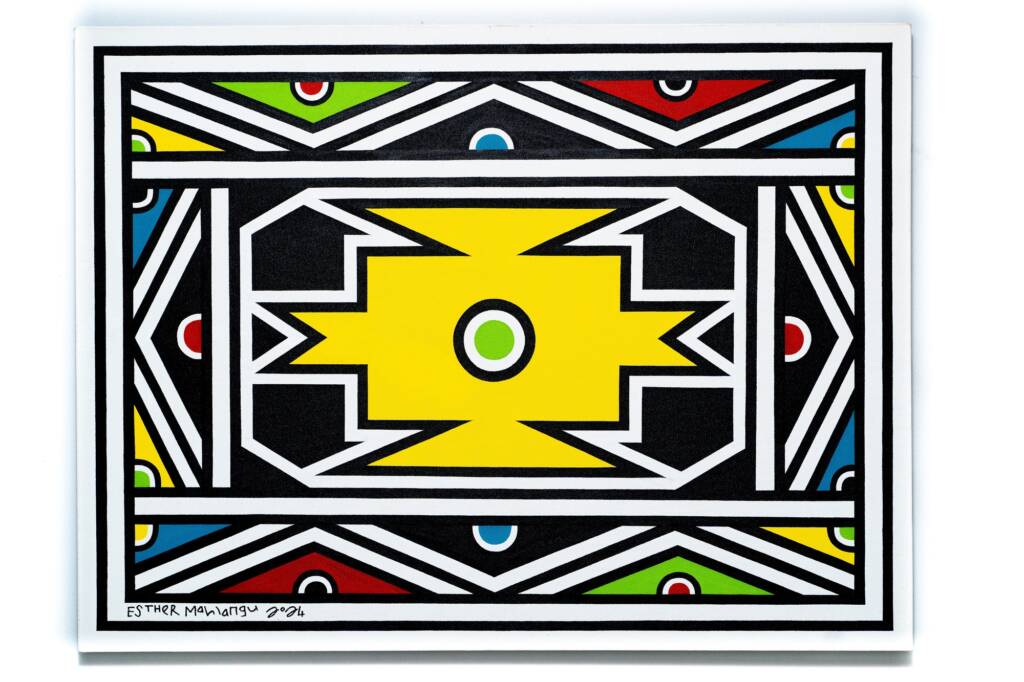
Images courtesy of the artist
